How to Make Baby Back Ribs Without Bbq Sauce
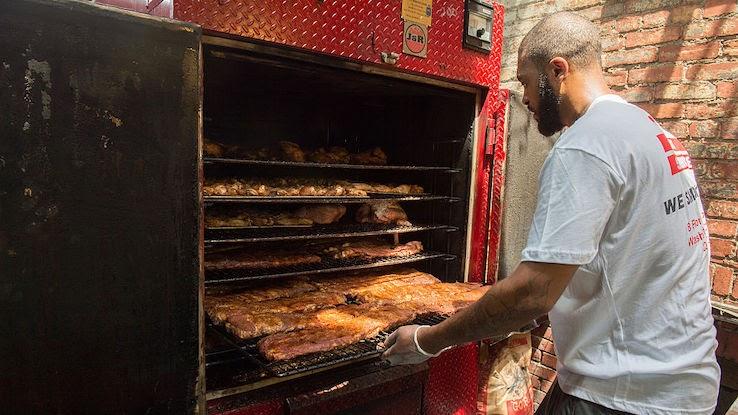
From Alabama White and Carolina Gold to Texas brisket and a lilliputian something called crispy snoots, American barbecue civilization encompasses a diverse medley of cooking techniques, cuts of meat and finger-lickin'-flavorful sauces. Today, many regions across the country accept their ain variations of barbeque — and some seriously deep local cultures to go along with them.
To gloat the fact that grilling season is officially underway, we're taking a quick trip across the country to highlight some of the United States' tastiest and most time-honored barbecue legends. Some are more famous than others, sure. Simply they're all unique and more than worth a try, whether you're an aspiring pitmaster or yet don't know your style around a pair of tongs.
Carolina Gold Is Terrifically Tangy
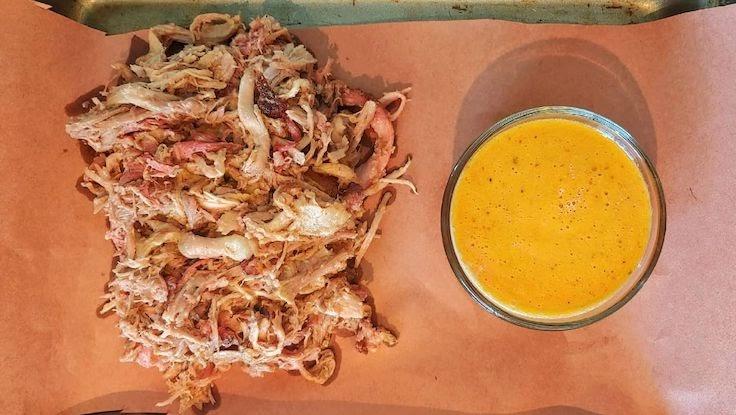
Offset end on the tour? The Palmetto State — specifically a band of state stretching from Columbia to Charleston. The charcoal-broil here in South Carolina focuses more on the sauce than the meat, which isn't to say the barbecued pork isn't important, but the sauce is definitely the main upshot.
Carolina Gilt is its name, and mustard is its game. Thanks to an influx of German language immigrants to South Carolina in the mid 1700s, the region's most famous charcoal-broil sauce has a mustard base. Vinegar is as well a key player in Carolina Golden barbecue sauce — it thins the mustard — and some carbohydrate and zesty spices finish it off. This uniquely mettlesome condiment is a must-try for all barbecue fans visiting South Carolina.
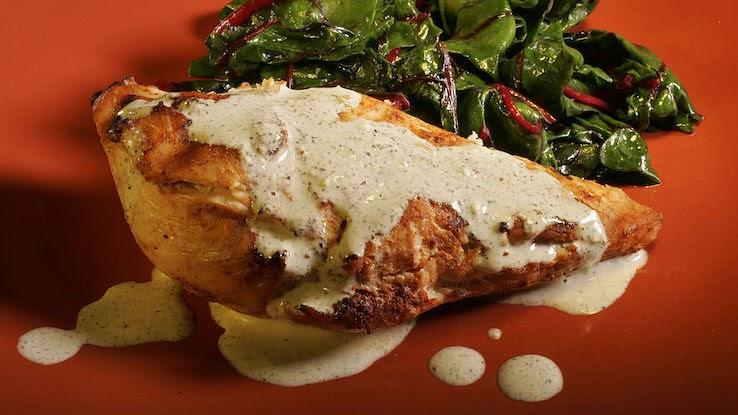
While traditional barbecue sauce is cherry-red in color as a result of its love apple base (ketchup is a common ingredient in traditional sauce), Alabama has taken its preferred condiment in a totally new management: The country'due south famous barbecue sauce is a much lighter color and completely free of all things tomato-y. Called Alabama White, its recipe begins with a mayonnaise base and incorporates apple tree cider vinegar, horseradish, salt, pepper and sometimes a spoonful or ii of brown sugar.
Another distinctive characteristic of Alabama charcoal-broil is that it's not just a champion of slow-cooked pork, merely of chicken every bit well. Head to an Alabama barbecue pit and y'all'll likely find pork or craven nestled comfortably on a sandwich and smothered in that signature kicky white barbecue sauce.
St. Louis Pork Steaks Avowal a Sweet Char
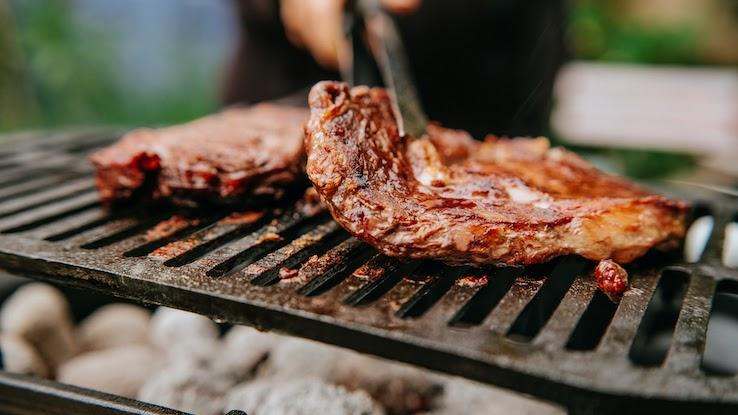
St. Louis is all about charcoal-broil in all forms — St. Louisans buy near twice as much charcoal-broil sauce as average Americans elsewhere around the country. And they're non just going whole-hog when it comes to their sauce, merely when it comes to their meats as well. The love of all things charcoal-broil ways this city has become known for some special cuts that y'all won't see as oftentimes anywhere else, including the coveted pork steak.
To prep this distinctive dish, pork shoulder is slow-cooked over a grill and slathered with a classically sweet, lycopersicon esculentum-based barbecue sauce. The steaks are thin-cut and come from a specific office of the pork shoulder known as the Boston butt. Despite its name, it's a cut of pork you're most likely to find in the Midwest. Pork steaks became popular in St. Louis in the tardily 1950s, and now yous can find them at virtually every grocery store and butcher in the region.
Texas Brisket Might Merely Be the Juiciest
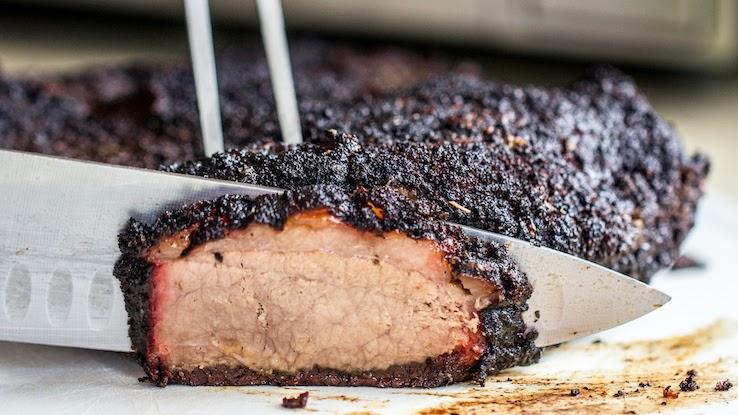
The saying "Everything'south bigger in Texas" rings true just as much for barbecue as information technology does for everything else in the Lone Star State — with an area that large, you're leap to encounter variations in cooking techniques, seasonings and cuts, right? Right. However, when people remember of traditional Texas BBQ, the first thing that comes to mind is probable the central Texas cowboy staple known as brisket.
Given the ubiquitous nature of beef in Texan cooking culture, information technology should come equally no surprise that brisket, a cut of meat from the lower breast of a cow, frequently takes middle stage in barbecue pits around the country. Making this mouthwatering staple involves lots of time and not likewise much heat — that famous "low and slow" technique that'southward a charcoal-broil hallmark and a key manner to soften tough cuts. Many Texans apply a dry rub spice alloy before popping their brisket into a smoker — not a grill — and tend to forego sauce completely with this cut.
Lexington Fashion Packs on the Flavour
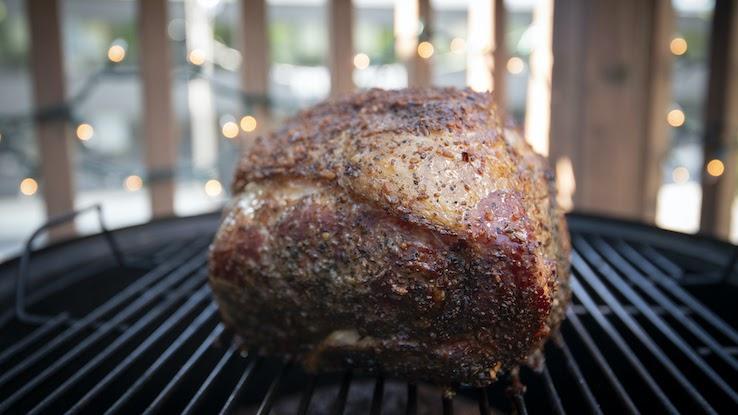
Lexington, North Carolina, has more barbecue restaurants per capita than whatsoever other metropolis effectually the globe, and its famed almanac barbecue festival draws hundreds of thousands of visitors each year — and so its title of Barbecue Uppercase of the World is pretty well deserved. But what'southward the large draw for all these hungry travelers (and non to mention the native Lexingtonians)?
Lexington-fashion barbecue is one of a kind, roasting salted pork shoulder over hickory forest. It also incorporates a secret rub made with paprika, pepper, brown carbohydrate and mustard. And if that wasn't plenty, Lexington barbecue has some other trick up its sleeve: For even more depth, the pork shoulder is basted with a special dip of vinegar, water, salt and pepper. Both the dip and the fat from the meat drip onto the coals beneath, and the resulting fume infuses the meat with a deliciously rich flavor. You lot can request more of that "dip" on the side, though the tender meat generally won't need it.
Kentucky Mutton Has a Special Tang
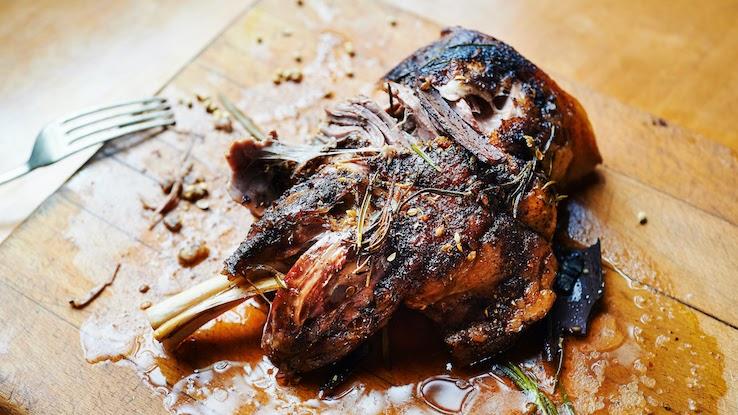
Wool production was booming in Kentucky during the early on 1800s, partly due to the fact that Irish and Scottish settlers in the region brought their cracking sheep-farming skills when they immigrated. Having so many sheep effectually led to the growing popularity of mutton as the meat of selection in local barbecue culture.
To barbecue mutton, Kentuckians typically fume information technology slowly over a hickory wood fire or in a smoker. Barbecued mutton is served with "mutton dip," which is a blend of Worcestershire sauce, vinegar, brown sugar, lemon juice and a handful of spices. It'due south a sour and tangy sauce that can't be missed when you're trying barbecued Kentucky mutton.
St. Louis Crispy Snoots Might Just Beat out Bacon
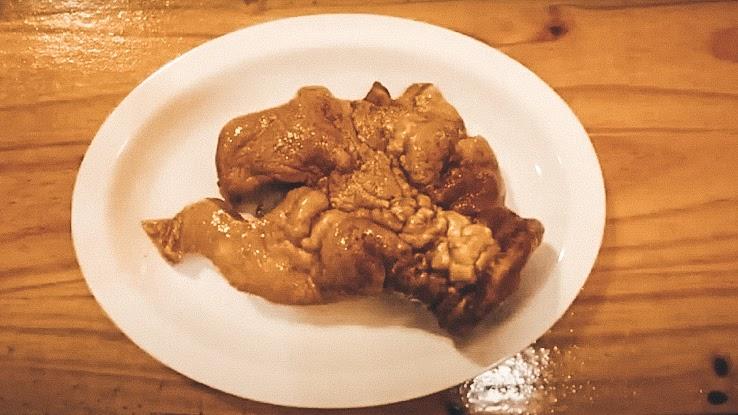
St. Louis pork steaks are a definite must-try, but if yous're sampling St. Louis barbecue you can't miss out on a truly unique dish with a pretty spectacular name: "crispy snoots." These snack-worthy delights are squealer snouts — nostrils not included — roasted on an open grill until they're nice and charred, which gives them their signature crispy texture. Then, they're generously covered in a sweet and thick tomato-based sauce whose ingredients include molasses, vinegar and spices.
St. Louis' crispy snoots have relatively humble beginnings; they originated at food trucks in East St. Louis during the 1940s, and they've become internationally renowned in the years since. Still non sure about noshing on noses? Their flavor and texture is all-time described as a "mix betwixt pork skins and bacon…served like a fleck," which does a improve job of highlighting why millions of diners chow down on snoots each twelvemonth.
Memphis-Style Dry out Rubs Create Crisp Crust
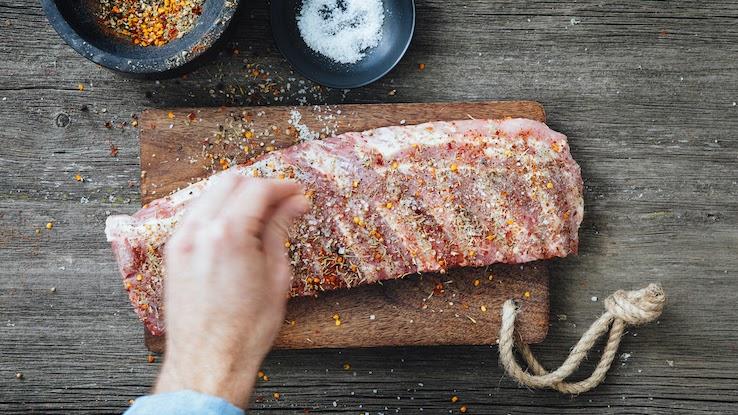
Memphis-way charcoal-broil gained its fame from its dry rub. Only don't become thinking that somehow makes the meat itself dry — it creates a zesty seal that locks in moisture, making Memphis meats fall-off-the-os good. Before smoke-cooking pork shoulders and ribs, pitmasters here coat their cuts in an aromatic spice mix that usually consists of paprika, cumin, sugar, cayenne pepper and garlic pulverisation, working it into the meat and building up a thick coating of flavor.
Every bit the meats cook depression and irksome, the rub forms a kind of crispy, delicious chaff. Some people even sprinkle a fleck more of the dry rub onto the meat for good measure. The vibrant flavor that comes from the rub usually ways serving the meat without any kind of sauce is a Memphis standard — but don't be afraid to ask for some on the side.
Hawaiian Kālua Pig Is Smoky and Tender
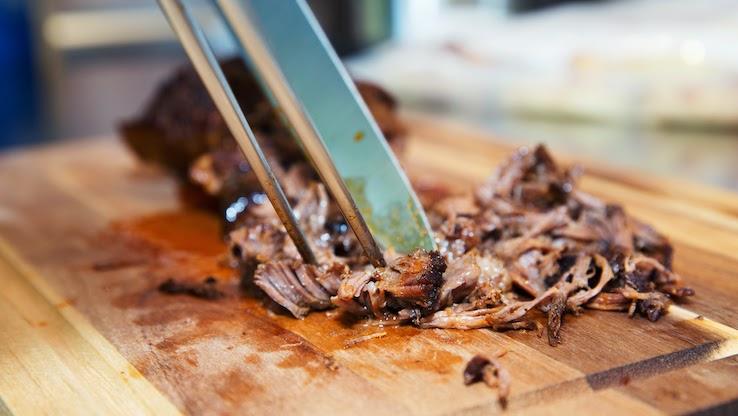
If you've ever heard of Hawaii's traditional lūʻau feasts, you might know that a frequent star of the party is a barbecued dish chosen kālua squealer. The give-and-take "kālua" describes a Hawaiian cooking method that involves edifice a fire in a pit called an "imu," placing stones over the embers and nestling ti leaf-wrapped meats on those stones. To end things off, the meat is covered in a layer of vegetation and completely buried in soil, creating an hush-hush oven that holds in plenty of steam to keep different meats tender and moist.
To lucifer the celebratory mood of a lūʻau (and to feed a big number of guests), a whole pig is often cooked in this manner. After steaming and caramelizing in the imu for several hours, the pork is removed and served shredded. Information technology takes on a smoky-sweet flavor from the ti leaves and the cooking process, and so it'due south rarely served with sauce — and one time you get a taste of this dish, you'll meet why condiments aren't necessary.
Source: https://www.ask.com/culture/sauce-bosses-roadmap-american-bbq?utm_content=params%3Ao%3D740004%26ad%3DdirN%26qo%3DserpIndex
0 Response to "How to Make Baby Back Ribs Without Bbq Sauce"
Post a Comment